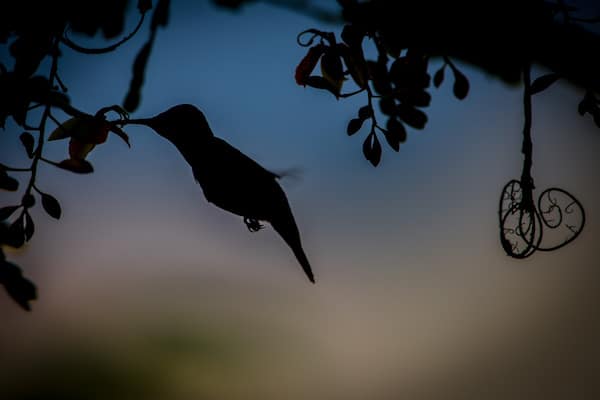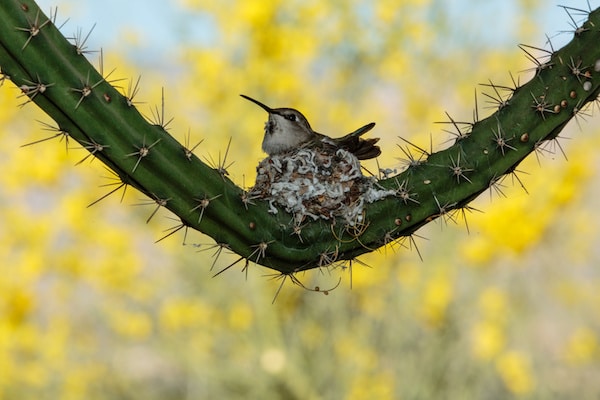How To Make The Best Hummingbird Food, Plus 21 Fun Hummingbirds Facts!
HOW TO MAKE THE BEST HUMMINGBIRD FOOD
To make the best hummingbird food, simply boil water, remove it from the heat, and let it cool to room temperature. Add one part sugar to four parts of water and stir until the sugar dissolves. Let the mixture cool completely, then pour it into your hummingbird feeder. Watch the video below for detailed step-by-step instructions from bird ecologist Brian Evans and zoo nutritionist Erin Kendrick.
HOW TO MAKE THE BEST HUMMINGBIRD FOOD INGREDIENT LIST:
- Refined Cane sugar
- Water
HOW TO MAKE HUMMINGBIRD FOOD DIRECTIONS:
- Mix 1 part sugar with four parts water. For example, mix 1 cup of sugar with 4 cups of water and stir until the sugar is dissolved.
- Do not add red dye, as this can be dangerous for hummingbirds.
- Fill your hummingbird feeders with sugar water and place them outside.
- Extra sugar water can be stored in a refrigerator.
- Change feeders every other day and thoroughly clean them each time to prevent harmful mold growth.

HUMMINGBIRDS – 21 AMAZING FUN FACTS
Did you know that hummingbirds can fly backward? Or that they eat up to three times their body weight in nectar daily? These little birds are amazing creatures; there’s much more to them than meets the eye. Here are 21 fun facts about hummingbirds that will make you see them in a whole new light.
- There are more than 300 species of hummingbirds.
- Hummingbirds are only found in the Western Hemisphere.
- The smallest hummingbird is the bee hummingbird, which is just 2 inches long and weighs less than a penny.
- The largest hummingbird is the giant hummingbird, which is 8 inches long and weighs up to 20 grams.
- Hummingbirds can flap their wings up to 200 times per minute.

- They can also fly backward, hover in mid-air, and even fly upside down.
- Hummingbirds consume nectar from flowers using their long tongues, which uncoil like a spring when they reach inside the flower.
- A single hummingbird may visit up to 1,000 flowers in a single day.
- In addition to nectar, hummingbirds also eat small insects and spiders, which they catch in mid-air or pick off plants with their beaks.
- Hummingbirds have very high metabolisms and must constantly eat to fuel their flight muscles. As a result, they may consume up to three times their body weight in food every day!

- Hummingbirds are mostly active during the day, but some species will also feed at night.
- When resting or sleeping, hummingbirds enter a state of torpor, in which their heart rate and metabolism slow down significantly to conserve energy.
- Most hummingbirds live alone, but they will sometimes form small flocks during the migration or when there is an abundance of food available.

- Male hummingbirds are usually more brightly colored than females and use their colorful plumage to attract mates.
- Some species of hummingbirds have been known to live for as long as 12 years in captivity.
- Female hummingbirds lay two eggs at a time, which hatch after about two weeks.

- Baby hummingbirds are called chicks, and they leave the nest after about four weeks to fend for themselves.
- Although most birds migrate south for the winter, some species of hummingbird migrate north! This is because many tropical flowers bloom year-round near the equator, providing a consistent food source for these little birds.
- Females build nests out of plant fibers and spider webs, which they glue together with tree sap or other sticky substances. The nests are usually no bigger than a thimble!
- The oldest known wild hummingbird was 11 years old when it was captured and released by researchers.
- A group of hummingbirds is called a charm! Now wasn’t that charming? 🙂

Did you know all these fun facts about hummingbirds? These little birds are truly fascinating creatures! The next time you see one buzzing around your backyard or local park, take a moment to appreciate all that they can do!
Follow Useless Knowledge on Instagram for more amazing facts.
If you enjoyed this Useless Knowledge post, you should check out Baby Pigeons: Why don’t we see them? for a fascinating look at baby pigeons.